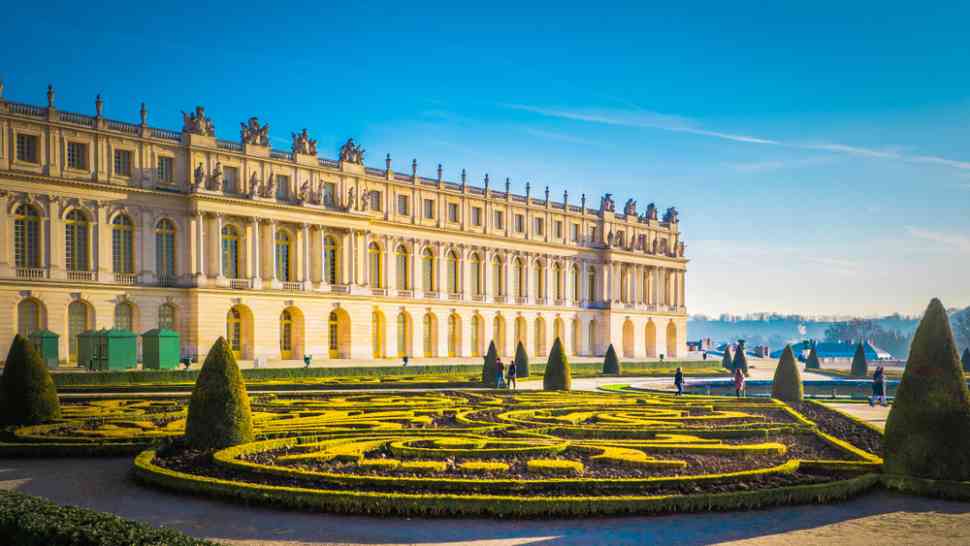The Ultimate Top 4 Summer Palaces You Must See

We are in the 21st century and, as it is well known, many European countries have renounced the rule of Basel. But even in those where the royal office is maintained, by no means do the royal houses practice monarchical power. In other words, it has been practiced for thousands of years in European, and not only the continent.
However, the chronic imperial power has left its mark even today. Impressive palaces, imposing towers, and palaces that are “overflowing” with endless wealth and high-level architecture make their presence felt even today.
The palaces of the European rulers are of particular beauty, which may not accommodate a royal family, but they remain remarkable and quite visited. Both their external and internal aspect “blow” an air of Renaissance aesthetics while reflecting the glow of the rich privileges that the European kings possessed. I choose, therefore, four royal palaces which, with their dazzling construction and imaginative image, attract the interest of travelers.
Versailles, France
The famous French palaces do not need special recommendations, as they are the most famous royal palaces of all time and inspired the construction of similar Royal lodges throughout Europe. The small area of Versailles is located a few kilometers outside Paris and was greatly upgraded after the decision of Emperor Louis XIV. The castle, which had been in the area since the 11th century, turned into his royal intimate. The construction began in 1660 and was completed 22 years later with a fascinating final result.
Considering that it has 2300 rooms, the royal palaces constituted an earthly paradise for the King of France and the upper classes of French society. It was divided into three sections. One of them belonged to the king and his family, while the remaining two accommodated ministers, nobles, and the country’s clergy.
Peterhof-Saint Petersburg, Russia
Inspired by the construction of the Palace of Versailles, the Russian ruler, Peter The Great, considered it an excellent opportunity for Russia to show its pro-Western aesthetics and reformation by creating luxurious summer palaces. Thus, the emperor approached famous artists and architects to design private lodges 30 kilometers outside the city. Construction began in 1714, and in 1723 the inauguration of the summer palaces of the Tsar of Russia took place, with a fully satisfying final result.
Within the palaces, there are 37 gilded statues and caryatids. At the same time, the walls of the Palace are full of great works of art, among them paintings with depictions of battles and beautiful and artful portraits. Memorable parts of the imposing palaces are both the gold-built Throne Room, The Ballroom, and the Portraiture Hall, known for its enchanting paintings of young girls dressed in traditional costumes.
Charlottenburg, Germany
It is the summer residence of Sophia Charlotte, the wife of Frederick III, the later Prussian king. Its original construction dates to between 1695 and 1699, and it was extended even further with the addition of the East Wing by Frederick the Great in 1740. In 1943, it was badly damaged by the bombing of the Allies in the Second World War; however, with exemplary management, it was restored and retained its original beauty.
Unique decoration of various works of art and paintings distinguishes the interior construction of the Palace. In total, all 70 rooms contained in the Palace are a sample of the Renaissance as well as neoclassical architecture. In addition, all the imperial structures are spacious and full of decorative objects. The porcelain Hall stands out from the rest of the impressive Galleries of the palaces. The amazing porcelain from the East that it contains inside is breathtaking.
Schoenbrunn, Austria
Located just outside central Vienna, this used to be the summer residence of the Habsburg Kings, who dominated the country. Their construction began in 1696 by Leopold The Great. It was interrupted in 1711 to continue and be completed 33 years later by Charles the Great as a gift to his daughter Maria Theresa.
Consisting of 1441 rooms, it has a strict style, and its architecture is described as Baroque. As in the previous cases, the interior of the Palace is distinguished by great beauty and ostentatious opulence in the decoration of the halls. Gold is also the “cornerstone” in the coating of the walls. At the same time, the impressive image is complemented by the various frames and tapestries as well as the many chandeliers. The rooms on the Royal roofs are extremely impressive, with the famous Breakfast Room of Maria Theresa and the Blue Chinese Lounge standing out.
Have you read?
Philosophy’s Role in Enhancing Human Decision-Making in an AI-Driven World by Lisa Gable.
How to create a people-first culture that retains talent by Jade Green.
Difficult Conversations: We can work it out by Shantha Mohan Ph.D.
5 ways to use the summer holidays to create better habits that stick by Donna McGeorge.
Using Our Attention to Improve Collaborative Performance by Grayson James.
Bring the best of the CEOWORLD magazine's global journalism to audiences in the United States and around the world. - Add CEOWORLD magazine to your Google News feed.
Follow CEOWORLD magazine headlines on: Google News, LinkedIn, Twitter, and Facebook.
Copyright 2025 The CEOWORLD magazine. All rights reserved. This material (and any extract from it) must not be copied, redistributed or placed on any website, without CEOWORLD magazine' prior written consent. For media queries, please contact: info@ceoworld.biz








